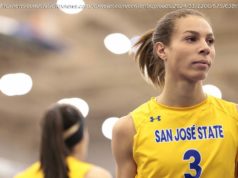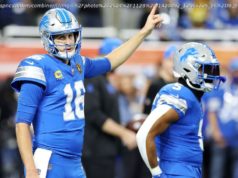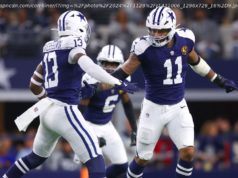Brandon Morrow has pitched in the first five games of the World Series this year, and all went well until Game 5. Still, he is undeterred as he tries to match a former coach’s feat.
LOS ANGELES — There is a reason it is rare to pitch in every game of the World Series. Two years ago, when Addison Reed did it for the Mets, he gave up five runs to Kansas City in Game 5 as the Royals clinched the title. On Sunday, when the Los Angeles Dodgers called yet again for Brandon Morrow, he served up four runs, including two homers, in just six weary pitches.
Morrow’s velocity was down and his location was off, but both only slightly. Even so, Morrow said, he might have survived the top of the Houston Astros’ lineup if he could have found that mystical quality all pitchers need: life.
The longtime starter Mike Mussina once explained that when a pitch lacks life — even if thrown hard — it seems to simply sputter to the plate, as if dead on arrival. But when a pitch has life, it seems as if it could carry right through the catcher, the umpire and the backstop. Morrow understands.
“That’s like the last 1 percent of what you can get on the ball, kind of like the life on your arm translates out and through the baseball,” Morrow said in the Dodgers’ somber clubhouse after the Game 5 loss, a 13-12 crusher in 10 innings . “Even though I felt good, I guess I just didn’t have as much life in my arm as I was hoping.”
One man familiar with Morrow’s arm is Darold Knowles, the rehabilitation pitching coach for the Toronto Blue Jays. When Knowles coached the Blue Jays’ Class A team in Dunedin, Fla., Morrow made annual visits while recovering from injuries each season from 2011 through 2014.
Along the way, Morrow said, he came to learn Knowles’s claim to fame: he is the only pitcher to work seven games of a World Series, doing so for the Oakland Athletics in 1973, when they defeated the Mets. Even with so much bullpen specialization in the decades since, nobody has matched the feat.
“It’s been 40-something years, and I always tell my wife it’s going to happen,” Knowles said by phone from Florida. “I think it will — and maybe this will be the year. It couldn’t happen to a nicer guy than Brandon.
“He had a lot of injuries when he was a starter with the Blue Jays, but it looks like he’s found his niche,” Knowles said. “He always threw hard. I wouldn’t have thought he’d be able to go two or three days in a row, but obviously that’s not a problem.”
It had not been a problem when Knowles spoke, just before Game 5. By then, Morrow had thrown 12⅓ postseason innings, with a 1.46 earned run average, as the primary setup man for Dodgers closer Kenley Jansen.
But Game 5 was Morrow’s 12th outing in the Dodgers’ 13 postseason games, and by the time he was done, an 8-7 Los Angeles lead had become an 11-8 deficit after a homer by George Springer, a single by Alex Bregman, a double by Jose Altuve and another homer by Carlos Correa.
Dodgers Manager Dave Roberts had said before the game that while Morrow was available, he hoped not to use him. But Clayton Kershaw did not survive the fifth inning, and Roberts deployed Kenta Maeda and Tony Watson to get through the sixth.
He still had four relievers (not including Jansen) for the seventh — Ross Stripling, Tony Cingrani, Josh Fields and Brandon McCarthy — but Morrow had sent word from the bullpen insisting he was ready.
“When I saw where the game was at in the seventh, I was getting loose and I was feeling O. K.,” Morrow said. “Probably selfish on my part to call down and push to let them know I’m ready and want to get in. They had a plan — we’re obviously very plan-oriented and try to stick to that – and I made them deviate away.”
Then again, Morrow was telling the Dodgers what they wanted to hear. Roberts did not need much convincing.
“I mean, I didn’t have to try too hard,” Morrow conceded. “I guess everybody’s trying to step up.”
Roberts called it “a credit to him” that Morrow asked to pitch, and said it would have been hard to turn him down. Morrow, who signed a minor-league contract in January for $1.125 million, had a 2.06 E. R. A. with no home runs allowed over 45 games this season and averaged more than five and a half strikeouts per walk.
“He was very good in spring training,” Roberts said. “You see the plus, plus velocity, and you always think, in a shorter stint, will his stuff play up? So he really embraced coming out of the pen this year, and he did that for our Triple-A club.”
Morrow, who had pitched for a decade with Seattle, Toronto and San Diego, yearned for the intensity that comes with the major leagues. But he had pitched only 18 games for the Padres last season after shoulder surgery in 2015 had ended his career as a starter.
“I was obviously hoping to get a major league deal,” said Morrow, who had a 1.69 E. R. A. in 18 games for San Diego. “I thought I threw the ball really well, but the swing-and-miss stuff wasn’t there, and the velocity wasn’t quite back all the way. Picking up the ball this year, though, something was different, like I knew I was stronger, ready to go. I felt like myself again.”
Morrow has always had the stuff to dominate. Seattle drafted him fifth over all in 2006, out of the University of California, passing on Andrew Miller and three future Cy Young Award winners — Kershaw, Tim Lincecum and Max Scherzer — who went in the next six picks.
The Mariners never found a steady role for Morrow, who has learned to manage Type 1 diabetes throughout his career. Traded to Toronto in December 2009, he periodically flourished as a starter, and lost a no-hitter with two outs in the ninth inning in 2010, finishing with a 137-pitch, 17-strikeout one-hitter. In 2012, he threw three shutouts through the first week in June.
Then an oblique injury cost him more than two months. Forearm problems and a torn tendon in his hand hampered him in other seasons. No wonder, then, that with good health this season, Morrow has been eager to contribute as much as possible.
Knowles can relate. In 1972, he was an eight-year major leaguer on an Oakland team bound for the World Series when a broken thumb in late September ended his season. The next year, the A’s won a five-game American League Championship Series without using Knowles at all.
“I just wanted to get into a World Series game; everybody dreams of that,” Knowles said. “I was just thanking God I got into the first game, and I happened to get the save.”
In that game, against the Mets, Knowles relieved closer Rollie Fingers with one out and one on in the ninth inning, protecting a 2-1 lead. The Mets had announced the left-handed Rusty Staub as a pinch-hitter against the right-handed Fingers, a future Hall of Famer. But when Oakland Manager Dick Williams called for the left-handed Knowles, the Mets’ manager, Yogi Berra, countered with a righty, Jim Beauchamp.
Knowles retired Beauchamp on an infield pop and then got the left-handed Wayne Garrett to fly out to end the game.
From there, Williams just kept calling for Knowles, who had 12 days of rest from the end of the regular season to the start of the World Series.






